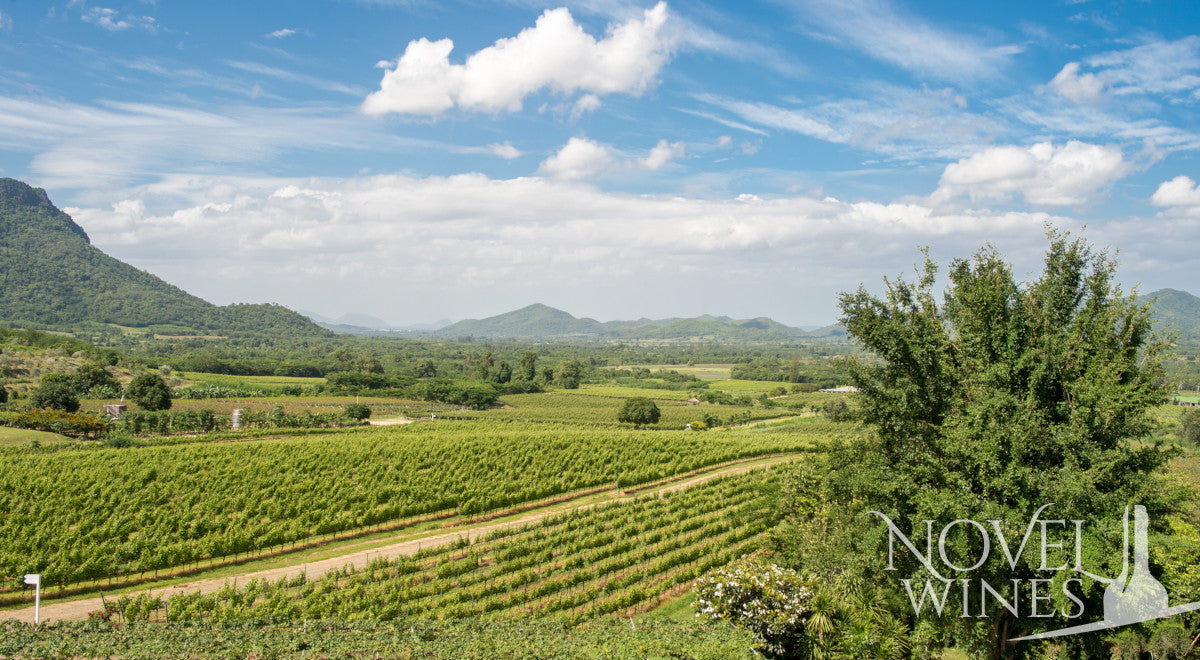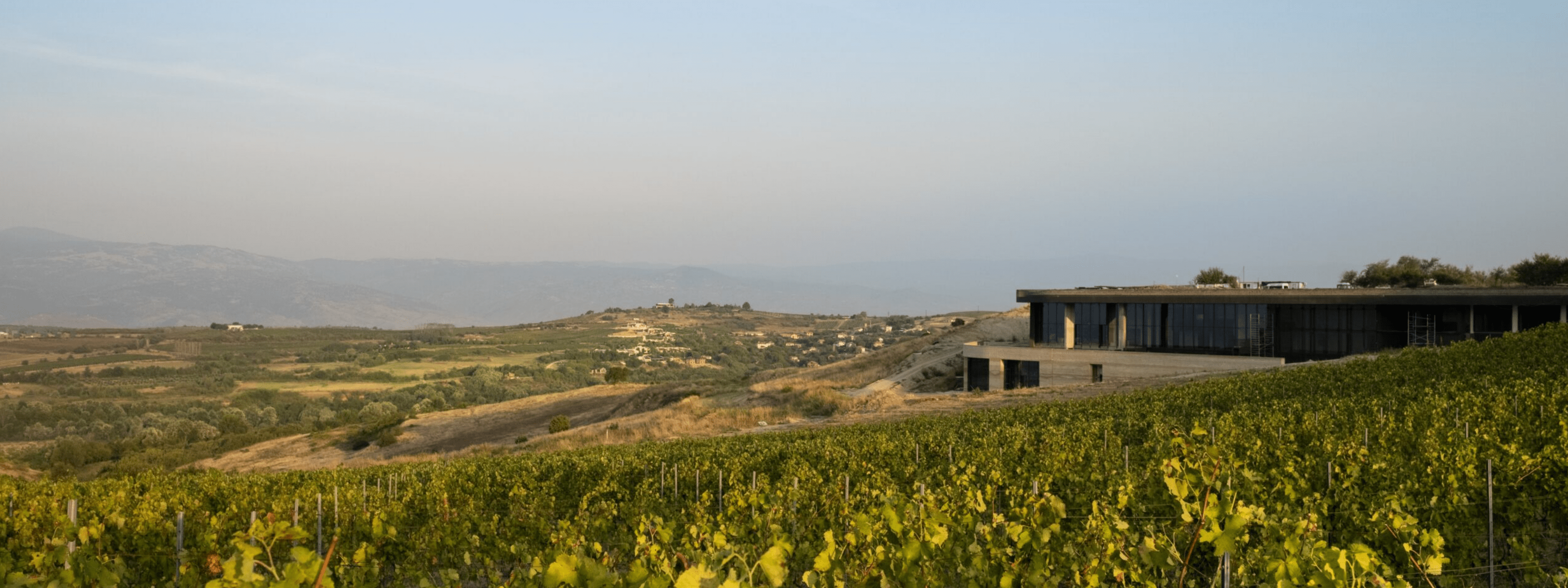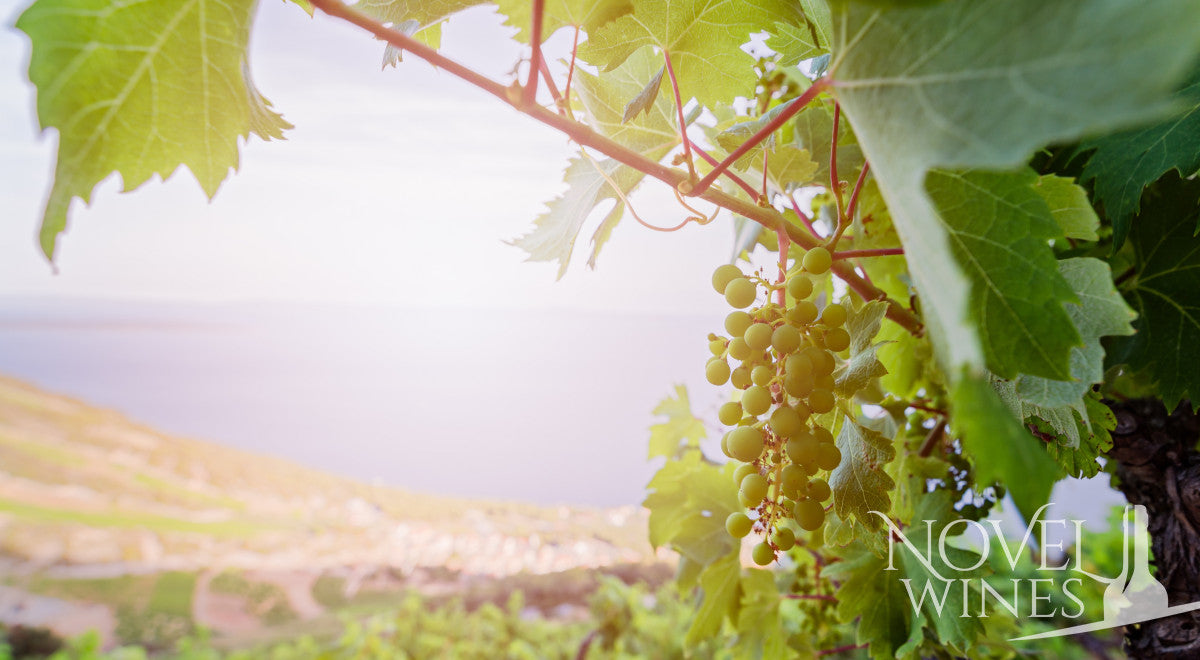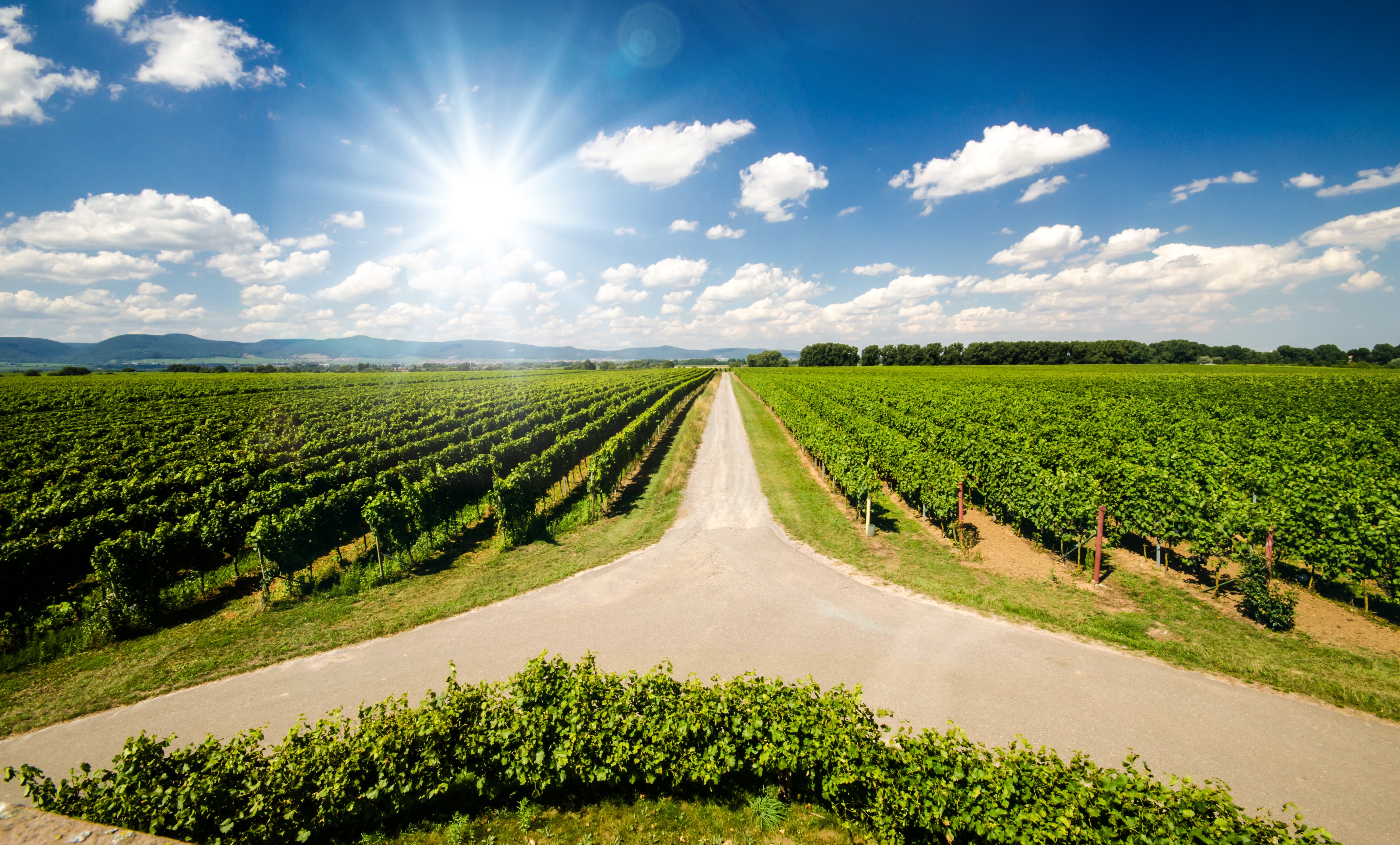
Your Guide to Asian Wines - This Month's Novel Wines Explorer's Club
Welcome to this month's Novel Wines Explorer's Club, the UK's most exciting wine subscription for the curious drinker. Each month, we will introduce you to a new wine region as part of our promise to deliver no two wines the same for a whole year. Not a member yet? Subscribe here.
Looking for an older guide? See all the Explorer's Club guides here.
What's in this month's Explorer's Club?
We've got a truly esoteric box of wine to send you this October. We're introducing you to the wines of Asia, featuring the likes of India, Japan and Thailand. In this exciting mix you'll taste wines you may never have tried before - even if the grapes might be similar, the climate is so wildly different that each of these wines carry their own unique stamp. We'll be indulging in volcanic Koshu white wines, sweet and creamy Chenin Blanc, and grassy Sauvignons, to a plump and fruity Pokdum blend and a rich, jammy single vineyard Shiraz.
So, without futherado, let's tuck into a box of Asian treats!

While much of Asia falls into the 30-50 latitude that experts say is the perfect area for vine growing, the culture of wine is still an exciting and emerging market for many of its people. India in particular is fast becoming the world's next wine powerhouse, but much of it is continental, hot and humid with large diurnal range and can produce ripe crops sometimes more than once a vintage. This means the winemakers and growers need to understand their unique terroir, using lessons from the west but tailoring them to a uniquely Asian climate and culture; Sula, as I'll discuss later, does this very well.
As fans of our wines will know, volcanic soils and regions have a tendency to deliver amazing depth and complexity to wine and Japan has this in abundance, especially in its main wine-growing region, Yamanashi prefecture. This volcanic soil lends itself to deep-rooting vines and concentrated fruit and yet, in a very Japanese fashion, its main grape variety, Koshu, is a delicate pink-skinned grape making lightly aromatic and saline wines. They are somehow both featherweight but long and intriguing on the palate.
In the humid, tropical Hua Hin Hills of Thailand, grapes like Pokdum with its plump berry and soft skins make for gluggable wines. Monsoon Valley, of all Thailand's emerging wineries, is spearheading the push for quality.
There's so much to meet when it comes to Asian wine so we hope this case will dip your toes in and excite you to try something new.
If you have any specific questions about the wine, you can get in touch with our team here.
We start this month's Explorer's Club with a wine very dear to me, Grace Koshu Kayagatake (included in The Globetrotter only), grown just a short train ride away from Tokyo in Yamanashi under Mount Koshu. This wine is made by the talented winemaker Ayana Misawa, one of the first winemakers I covered as a journalist early in my career. Her wines are delicate but characterful, with this Koshu showcasing pithy citrus and bittersweet pink grapefruit.
The grapes are grown on vines in volcanic soils, something I find adds salinity - like salting your food - that brings out more flavour and makes your mouth water. Naturally that makes it a great match with go-to Japanese cuisine like sushi, and I also love this wine with grilled white fish or goat's cheese.
One thing that sets Japanese drinks production apart from the rest of the world - whether it be sake, whisky or wine - is the attention to detail. The product they create is not simply delicious but full of subtle nuances. You can spend all day tasting the Koshu varietals from Grace and not get bored. The winery was set up in 1923 and today it is one of Japan's leading wineries on the export market.
Next up we have the Chateau Mercian Koshu Sur Lie (included both The Rambler and The Globetrotter). This is another Japanese white wine from Yamanashi but this time it has also had lees ageing, which is where the wine is rested on the yeast cells after they've been spent from fermentation. This can add creaminess typically, but the short cool time on lees with Chateau Mercian's Koshu adds texture and grippiness to the wine. The wine enjoys 8 months on its lees developing this extra flavour and texture before it is bottled, rested and then sold.
The wine was made by Mitsuhiro Anzo, who showcases all of the style of Koshu in this bottle. Koshu, Japan’s indigenous wine grape, can be traced back to 1186 when it was discovered growing wild at Katsunama in Yamanashi prefecture, supposedly having reached Japan from Europe on the spice trail. Today very much a Japanese wine, it is only recently that we have had the pleasure of trying it abroad.
Pair Chateau Mercian's Koshu with fish pie, miso chicken or salmon ceviche.
Your next white wine in the case this month is the Sula Vineyards Chenin Blanc (included both The Rambler and The Globetrotter). This wine comes from India's Maharashtra region, near the town of Nashik. Chenin Blanc is one of the few grape varieties that seems to retain a good level of acidity as it ripens or, in some hotter years, over ripens. Entrepreneur Rajeev Samant originally teamed up with Californian winemaker Kerry Damskey to set up Sula Vineyards as a push for quality Indian wine - and make a wine that could be enjoyed with, rather than prior, to Indian food.
With this riper style of Chenin Blanc, some malolactic fermentation is employed to turn sharp acidities into creamy soft lactic acidity, and residual sugar is left, albeit gently balanced, to add sweetness. This mix of creamy sweetness with the wine's bright pear, red apple and spice flavours makes it a delightful match with dals, biryanis or fried bhajis.
Your final white wine is another entry for India's Sula with their Sula Vineyards Sauvignon Blanc (included in The Globetrotter only). I remember, years ago, when I first went to a Wines of India book launch event at London's Institute of Masters of Wine tasting this grassy, ripe and soft white wine. It was, at the time, the pick of the Indian wines by famous critic Jancis Robinson MW. While I personally preferred the rounded sweet softness of the Chenin Blanc, over the years I've grown to enjoy Sula's Sauvignon.
Try not to think of this as Sauvignon Blanc. It's grassy, almost peachy, and raw-like with fresh cut acidity and a hint of bruised pear. It has a thicker, more enveloped texture than your typical Sauvignon. It's best enjoyed with fish curries, dosas or samosas.
Before we try the delicious and expertly made red from Sula, let me intro you to another red wine from an unlikely place: Thailand. This is the Monsoon Valley Vineyard Pokdum-Shiraz Red (included in The Globetrotter only). An award-winning red wine from Thailand's premier contemporary winemaker Monsoon Valley using grapes sourced from the floating Vineyards of the Chao Phraya Delta and the Hua Hin Hills. Native Pokdum, Shiraz, Dornfelder and Rondo are carefully blended for layered complexity.
Light ruby in appearance with aromas of plum and red fruits, toast and subtle smoke. The wonderfully soft and textured palate shows a berry fruit and spice character with leathery undertones and a velvety finish. Try with Thai and East Asian cuisine such as red curries, beef salad, Panang Beef and chilli pork.
Monsoon Valley Vineyard is built on a former elephant corral, a sublime place where wild Asian elephants were domesticated. The terrain of loamy-sand and slate and constant ocean breeze allow international grape varietals to thrive and produce aromatic and award-winning wines. Their aim is to produce wine that uses a combination of the New and Old World accentuated with an exotic touch.
Finally let's introduce you to the wine that kicked off our Asian selection in 2016 all those years ago: Sula Vineyards Dindori Reserve Shiraz (included both The Rambler and The Globetrotter). This is a single vineyard selection of Shiraz grapes on the Sula estate and it's a real treat. It has often been a marmite wine for my customers, with people loving its smoky and jammy depths and others finding it all a bit much in the glass. The one thing everyone agrees on is that it's the best wine to pair with tomato based curries (think Jalfrezi, Madras or Tikka Masala).
This Shiraz is picked late, plump and ripe, giving it sweetness and fullness of flavour. After fermentation, the wine is aged in heavily charred American oak barrels for 12 months giving elements of smoke, spice and vanilla. These heady aromas work wonders with spicy food.
Dindori is a single vineyard in a picturesque sub-district of Nashik, offering gentle hills of red laterite and basalt rock. These lighter soils allow the Shiraz to flourish, rooting deeply into the nutrient-rich soils below.

Where can I find out more?
If you're not subscribed to the Club, crack on and get your subscription online by clicking here and join from only £49. If you'd rather just stock up on Asian wine, go here.




